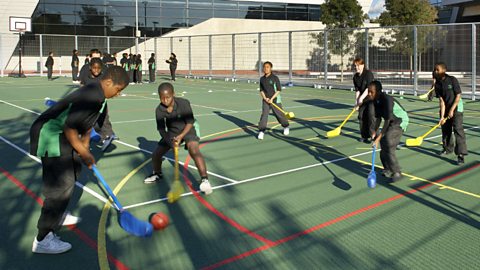Young people and sport
Statistics on the number of young people taking part in sport and physical activity in the UK vary as there is not a single source of data. A general picture shows that young people's participation is high during curriculum time as physical education (PE) is compulsory. It is lower for extracurricular sport and it drops dramatically when young people leave school. Overall, young people's participation decreases from age 13.

Young people have the opportunity to take part in a greater variety of sports and physical activities than in the past. This includes more fitness activities, individual activities and non-traditional games.
To increase young people's enjoyment of and participation in sport and physical activity, providers need to have a flexible approach and work with young people to find the solutions.
Engaging young people in sport and physical activity
Read the case studies. What can be learnt from them to increase young people's participation?
Megan
Megan is 15. She disliked PE and regularly 'forgot' her kit so she didn't have to take part. This year the PE teacher took a new approach and asked all of the girls what they liked and disliked about PE and how it could be improved. She acted on the girls' ideas. Now PE lessons are single-sex, there are options – fitness or games, and the girls work towards and are rewarded for personal bests and effort.
- Why does it help to consult young people?
Consultation helps to provide appropriate choices for young people. In schools, this consultation can help to target clubs and taster sessions that genuinely suit the children attending the school.
- What difference does it make to have a choice?
All people have different interests and desires and a wider variety of activities is more likely to engage more young people. If schools stick only with the traditional sports, then the interests of many young people will go untapped.
Jake
Jake is 14. He enjoys and is good at PE – especially gymnastics and athletics – but didn't attend any extra-curricular clubs or teams. He said he didn't like competitions. His school invited an inline skater to demonstrate and share her experiences and, as a follow up, organised a visit to a taster session. Jake now skates regularly in lessons at the local park and sports centre. He has just taken part in an U16 event.
- How important is it to have positive role models?
Role models provide ongoing models of behaviours for those who look up to them. Role models may be elite performers but could equally be a peer, friend or family member.
- How do different activities affect attitudes to sport?
All sports and activities develop different behaviours and attitudes. Athletics might help a young person to push themselves physically while playing rugby may develop confidence and bravery.
Farrah
Farrah is 16. She took part in PE but not after school as she couldn't see the benefits for her future. The school set up a sports leadership scheme that focused on employment skills. Leaders gained experience by running activities for children. A friend encouraged Farrah to join so they could work together. Now Farrah volunteers at a local primary school sports club and has included this on her CV and personal statement.
- How can we make sport relevant to young people?
Young people want to have fun and sporting experiences at a younger age need to be based around enjoyment. Seriousness and commitment to training need to be built in gradually and when it suits the individual person.
- What difference do support and encouragement make?
When young people feel supported in sport they can achieve anything. Encouragement is rewarding and helps to generate a feel-good factor.
Question
Which of the following strategies will be most effective in helping a PE teacher motivate young people to take part regularly in extra-curricular sport?
A – Put young people who do not take part in detention
B – Offer a prize for the person who is the fittest by the end of term
C – Survey pupils to find out what they would like to do when
C – Involving young people in designing and organising their own sports sessions is known to be an effective way to increase their participation.